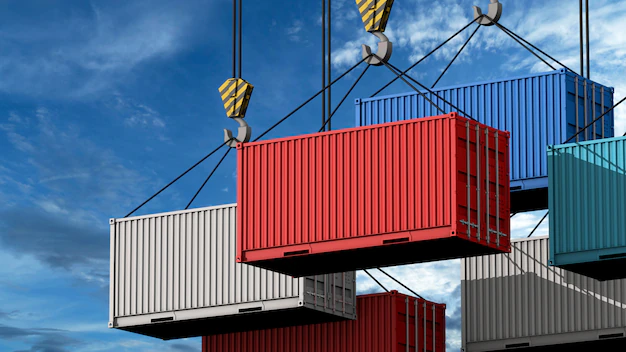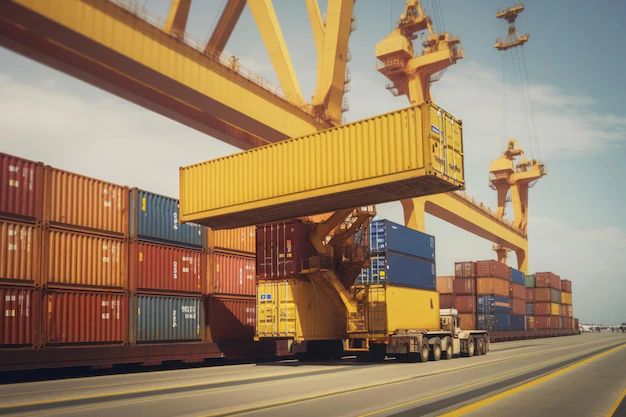The Complete Guide To Shipping Containers For Beginners
by Abdul Aziz Mondal Business Development 23 November 2023

Shipping containers have become essential to global trade and commerce, but their uses extend far beyond just transporting goods across the oceans.
Solutions like SCF containers offer large metal boxes that are incredibly versatile and have applications in various industries and creative architectural projects. If you’re new to shipping containers, this comprehensive guide will introduce you to everything you need to know about them and their myriad uses.
Understanding Shipping Containers
What Are Shipping Containers?
Shipping containers, also known as cargo or freight containers, are standardized metal boxes designed to transport goods across long distances, primarily by sea, rail, and road.
They come in various sizes, most commonly being the 20-foot and 40-foot containers. These containers are made from corrosion-resistant steel and are designed to withstand the harsh conditions of international shipping.
Container Types and Sizes
There are several types of shipping containers, each tailored to specific cargo types and transportation needs:
- Dry Containers: These are the most common type used for general cargo. They are airtight and waterproof, protecting goods from the elements.
- Refrigerated Containers (Reefers): These containers have temperature control systems, making them ideal for transporting perishable goods like fruits, vegetables, and pharmaceuticals.
- Open-Top Containers: Designed with an open top covered with a removable tarpaulin, these containers are suitable for oversized cargo that cannot fit through standard container doors.
- Flat Rack Containers: These containers have collapsible sides and ends, making them ideal for carrying oversized cargo like machinery and vehicles.
- Tank Containers: Specifically designed for transporting liquids and gases, these containers come in various sizes and configurations.
Container Dimensions
Here are the dimensions of the two most common container sizes:
- 20-Foot Container: Approximately 20 feet long, 8 feet wide, and 8.5 feet tall. This size suits smaller shipments and can be easily transported by truck.
- 40-Foot Container: Approximately 40 feet long, 8 feet wide, and 8.5 feet tall. This size is commonly used for larger shipments and is the standard for international shipping.
The Uses of Shipping Containers
1. Shipping and Transportation
The primary purpose of shipping containers is to transport goods across the globe efficiently and securely. They are loaded onto ships, trains, and trucks, making it possible to move products from manufacturers to consumers anywhere in the world.
2. Storage Solutions
Shipping containers also make excellent storage units. Many individuals and businesses use them to store equipment, inventory, or personal belongings. They are weatherproof and secure, offering a cost-effective alternative to traditional warehouses.
3. Temporary Accommodation
Shipping containers are increasingly being repurposed as temporary accommodation solutions. They can be converted into comfortable living spaces, offices, and emergency shelters. This trend has gained popularity due to their durability and affordability.
4. Construction and Architecture
Architects and builders have embraced shipping containers as a sustainable and innovative construction material. They can be stacked, modified, and combined to create unique structures, including homes, offices, schools, and art installations.
5. Pop-Up Retail and Events
Shipping containers have also found their way into retail and events. Pop-up shops, food stalls, and event stages made from containers have become a trendy and cost-effective way to showcase products and host gatherings.
Buying a Shipping Container
A. New vs. Used Containers
You must decide between new and used options when buying a shipping container. New containers are pristine and have a warranty but are more expensive. Used containers are more budget-friendly but may have signs of wear and tear. The choice depends on your specific needs and budget.
B. Container Inspection
A thorough inspection is essential whether you choose a new or used container. Check for rust, dents, and holes, and ensure the container’s doors, locks, and seals are in good working condition. A well-maintained container will serve you better in the long run.
C. Delivery and Placement
Consider how the container will be delivered to your location. Ensure there is enough space for the delivery truck to maneuver and place the container where you want it. Some companies offer specialized equipment for precise placement.
D. Container Modifications
You may need modifications if you plan to use the container for purposes other than shipping or storage. Common modifications include adding windows, doors, insulation, electrical wiring, and plumbing. Working with professionals experienced in container modifications is crucial to ensure safety and compliance with local building codes.

Container Maintenance and Care
1. Cleaning and Maintenance
Regular cleaning and maintenance are essential to extend your shipping container’s lifespan. Remove dirt, debris, and rust, and apply rust-resistant paint to protect the steel—Lubricate hinges and locks to ensure smooth operation.
2. Security Measures
Shipping containers are known for their security features, but additional measures may be necessary depending on their use. Consider installing security cameras, alarms, and sturdy locks to protect your container and its contents.
3. Environmental Considerations
Shipping containers have a significant environmental impact, so it’s crucial to be mindful of their disposal. Recycling and repurposing containers can reduce waste. Some creative ideas include turning them into gardens, swimming pools, or small-scale solar power stations.
Legal and Regulatory Considerations
A. Zoning and Permits
Check local zoning laws and building codes before repurposing a shipping container for residential or commercial use. You may need permits and approvals to ensure your project complies with regulations.
B. Property Taxes
Using shipping containers for living or business purposes may affect your property taxes. Consider potential tax implications and consult a tax professional to understand your responsibilities.
Final Thoughts
Shipping containers have come a long way from their origins as vessels for transporting goods across the seas. They now play a crucial role in storage, construction, and creative design. Whether you’re looking to buy a container for shipping, storage, or a unique project, this guide has provided a comprehensive overview of the world of shipping containers.
Safety, legality, and proper maintenance are key factors when working with shipping containers. By following the guidelines outlined in this guide, you can make informed decisions and unlock the full potential of these versatile metal boxes. Whether starting a business, embarking on a construction project, or simply looking for creative ways to repurpose a shipping container, you’re now equipped with the knowledge to get started.
Read Also:







































































































